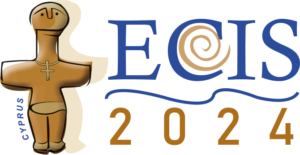Paper Number
2340
Paper Type
Short Paper
Abstract
Conditions and causes for workarounds in healthcare information technology (HIT) are relatively well understood, and yet, workarounds continue to persist and negatively impact patient safety. Perhaps more concerning, workarounds hurt employee safety, resulting in burnout, job dissatisfaction, self-harm, and suicide. Reducing workarounds in HIT systems would improve safety for both employees and patients. Although individual-level theories to explain workarounds abound, we propose that an organization-level theory is necessary to tackle this problem. This paper addresses workarounds as part of a systemic problem by contextualizing a hospital system as a complex socio-technical system. Based on a qualitative case study of a hospital system’s users, administrators, and developers, we plan to show that path constitution theory explains the process whereby decisions made beyond HIT users’ control force them to create workarounds. We anticipate this research will provide a theoretical basis to understand why workarounds of HIT continue to threaten workplace safety, as well as practical solutions for reducing harmful workarounds.
Recommended Citation
Baker, Elizabeth and Connolly, Amy J., "When IT Workarounds Threaten Workplace Safety" (2024). ECIS 2024 Proceedings. 1.
https://aisel.aisnet.org/ecis2024/track18_healthit/track18_healthit/1
When IT Workarounds Threaten Workplace Safety
Conditions and causes for workarounds in healthcare information technology (HIT) are relatively well understood, and yet, workarounds continue to persist and negatively impact patient safety. Perhaps more concerning, workarounds hurt employee safety, resulting in burnout, job dissatisfaction, self-harm, and suicide. Reducing workarounds in HIT systems would improve safety for both employees and patients. Although individual-level theories to explain workarounds abound, we propose that an organization-level theory is necessary to tackle this problem. This paper addresses workarounds as part of a systemic problem by contextualizing a hospital system as a complex socio-technical system. Based on a qualitative case study of a hospital system’s users, administrators, and developers, we plan to show that path constitution theory explains the process whereby decisions made beyond HIT users’ control force them to create workarounds. We anticipate this research will provide a theoretical basis to understand why workarounds of HIT continue to threaten workplace safety, as well as practical solutions for reducing harmful workarounds.
When commenting on articles, please be friendly, welcoming, respectful and abide by the AIS eLibrary Discussion Thread Code of Conduct posted here.


